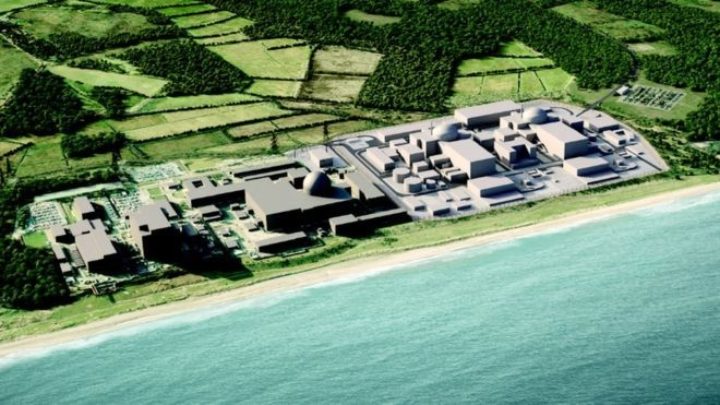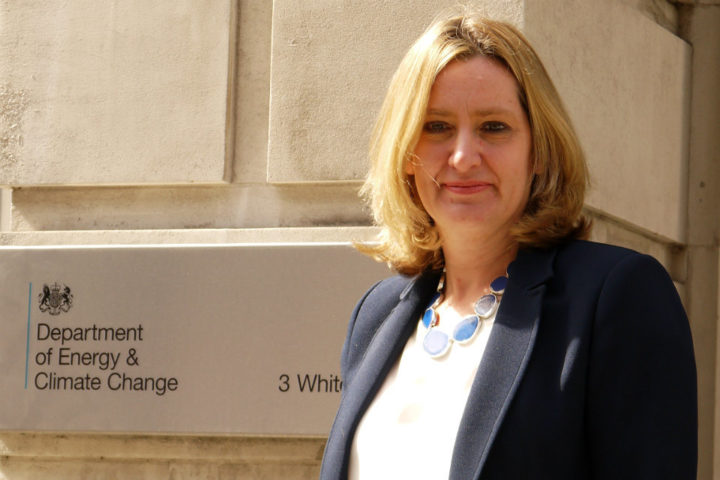RAB – a false dawn for new nuclear?
A major hurdle has been cleared on the path to new UK nuclear, but is it enough?
By Jonny Marshall
Share
Last updated:
Finally, over the summer the nuclear industry was presented with what it has been longing after for years. A consultation into a new funding model - dubbed Regulated Asset Base, or RAB - that should bring the costs of new power stations down to make them more competitive with renewable energy sources.
Following raised eyebrows for putting pen to paper on the deal for Hinkley Point C, both the Government and industry appear confident that the consultation will lead to a nuclear renaissance on British shores. Their vision sees growing demand for clean electricity over coming decades being sated by a fleet of both conventional and small modular nuclear reactors (SMRs).
So much is the belief that new nuclear will come to pass that National Grid have started to include SMRs in its Future Energy Scenarios work. However, it still seems to be far from a done deal. This blog will run through some of the hurdles that still stand in the way.
Hints of indecision?

While the RAB consultation is indeed out, there are a couple of sections that suggest all may not be smooth sailing.
Indeed, the wording of the first question ‘Have we identified a model which could raise capital to build a new nuclear power station and deliver money for consumer and taxpayers?’ is unusually unsure for a government consultation, and leaves the door open for consumer groups – and others who have voiced concerns – to make the case for ‘no’.
It's also notable that some of the most controversial parts of the RAB model – such as who picks up the bill if projects are delayed or costs overrun – are not tackled in this consultation. Instead they are promised in the future, and therefore at risk of running up against delays due to the current political deadlock.
An ever-bullish nuclear industry continues to claim that UK projects will be delivered on time. However, with a litany of evidence of construction delays and cost overruns from power stations in construction elsewhere, it is vital that risks are fairly apportioned before spades hit the ground.
Another landmine lurking in the survey is the threat of a Value for Money (VfM) assessment, requiring that, on a total system costs basis, new nuclear power stations do not create undue burden for the British public picking up the bill.
Before contracts are signed, new nuclear projects will have to show it can be brought online “at a lower total electricity system cost for consumers than alternatives without the project”
A thorough and diligent VfM assessment should compare the costs of any project with that of low-carbon alternatives, be they renewables, biomass or fossil fuels fitted with carbon capture technology. During this, one would expect another appearance of the problem that has blighted the industry in recent years – lack of competitiveness against low-cost wind and solar. In fact, a complete job may even conclude that onshore wind offers the best value for money, even accounting for system costs and without the benefits of RAB-induced lower capital costs.
The need to clear these not-insignificant hurdles suggest that the nuclear industry may be somewhat hasty in cracking open bottles of champagne, even before longer-term issues are considered.
Scandal-in-waiting
The net-zero carbon target aside, Theresa May’s decision to sign off the deal for Hinkley Point C is almost certain to be her lasting legacy on the energy world. Ever-increasing subsidies will affect household budgets well into the second half of the century; a history that may not be discussed in glowing terms.
But at least we know in advance how much Hinkley will cost, and will only be paying for it when it/if it starts generating.
Under the RAB model things will be different, a levy will be added to bills before the plant is up and running.
EDF has said that building a new plant at Sizewell in Suffolk would add £6 onto household bills. A small number when presented in this form, but one that causes more alarm if expressed as ~£490 million per year, or nearly five billion pounds over a ten-year construction period – just for one power station; the industry is of course aiming for more.
This is all assuming the plant is built on time. Analysis has found that a five-year delay in construction could see overall project costs double, making these numbers even scarier.
Would any PM want to be remembered for signing this off?
Giving up on EMR

A third effect of pressing ahead with the RAB model would be the admittance that one of the main pillars of UK energy policy – creating a framework within which the government can take a hands-off role – is over.
Economic Regulatory Regimes, Allowed Revenues, Government Support Packages… are not terms that spring to mind in a market left to its own devices. Opting for a more hands-on role not only invites criticism, but also raises the question of why state capital is not used, when it can be raised at far lower costs than that from private sources.
The costs of building a nuclear power station are effectively proportional to the cost of capital, therefore the cheapest way to bring new units online is to fund them from state coffers, especially when interests rate are at historic lows.
The complexity of RAB could even be a cause of delay in new projects. KPMG has expressed doubt that the framework will be in place in time for EDF to make a final investment decision on Sizewell in 2021. The longer the delay, the less cost-competitive nuclear becomes.
Why this matters now
Widening electrification of the economy is expected to be key in meeting national carbon targets. The Government retains a position in support of new nuclear capacity, and most scenarios contain an increase in nuclear generation (16 GW of new capacity by 2050 in one National Grid vision).
If this is to be achieved, and done so without unnecessary financial burden on British families and businesses, construction needs to begin soon and proceed without the chronic delays that have blighted other nuclear developments around the world.
If the Government is keen to back the long-promised nuclear renaissance, and is fine shouldering the associated risks, it will require more firm action than promised in the RAB model.
Whether this involves spreading more risk onto the British public, or forcing nuclear projects to compete on the same terms as other new capacity, a decision is needed to ensure that neither energy bills nor carbon emissions jump in the 2020s.
Share